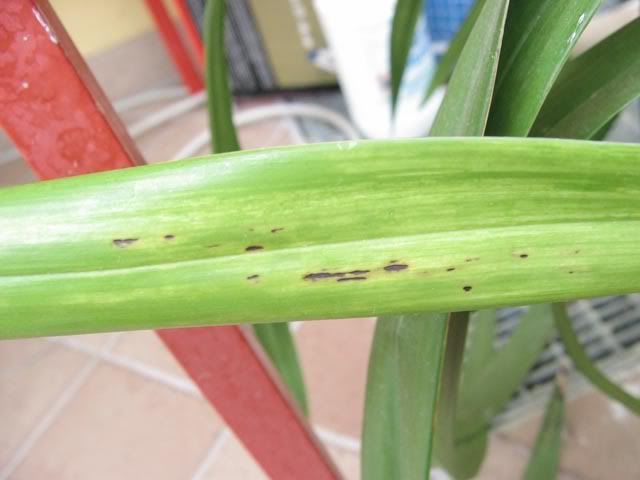Preventing orchid disease requires persistent attention to the condition of your plants. By recognizing the symptoms early you can prevent a curable condition from becoming fatal. Discover some of the tell-tale signs that require your immediate attention.

Photo: orchidboard.com
- An Ounce of Prevention.
One of the best defenses in protecting your plant from orchid disease is constant observation and inspection. Careful handling of your plants will allow you to spot symptoms of disease so you can take immediate action to remedy the cause.
Because orchids are slow growing plants it may take some time before problems become apparent. For example, if you are watering your plant incorrectly by using too little or too much water it will become apparent as leaves become yellow and drop off, but this might not occur until eight weeks later. By this time your plant may have lost all its roots and will either die or will require many months of attentive care before it recuperates fully.
- Types of Diseases.Orchid disease is usually the result of a bacterial or fungal infection and is caused by low temperatures and high humidity. Black or brown spots will appear on the bulbs, roots or flowers and will quickly develop into soft rotting tissue that spreads rapidly. If this is not remedied immediately the plant can die within a week.
- What You Need to Do.As soon as you notice evidence of orchid disease you must take immediate action by removing the affected part. Using a sterilized knife cut back to the clean tissue and dust the cut with sulphur powder. This will eliminate the rot. You should also carefully examine other plants which are in close proximity for similar signs and treat them accordingly.
- Other Preventive Measures.Fungicides can be readily purchased from local nurseries or online and it is recommended that you consult these resources if the infection is severe. The proper balance of temperature, humidity and air supply needs to be maintained at all times.
Even a sudden brief drop in temperature is sufficient to trigger a bacterial or fungal attack. Debris that may accumulate from old leaves, for example, can also become a breeding ground for fungus. If any tissue is left exposed when flowers are cut it should be dusted with sulphur to prevent entry of fungus spores. All tools including knives and scissors need to be sterilized by heating them with a flame or swabbing them with alcohol.
- Virus Disease.
A virus is the worst kind of orchid disease because it is often difficult to detect and is incurable. Viruses reproduce and thrive in specific cells of a plant breaking it down and eventually killing the plant. The good news is that they are relatively uncommon. They can only attack a healthy plant though open cuts or wounds inflicted by insects.
Your best option is to be proactive in contolling pests and insuring that your cutting tools are sanitized. The symptoms of a virus attack have several variations. They can show up as light spots and streaks which will be transparent when held up to the light. As the disease progresses they will turn into streaky, black masses resulting in stunting the growth of the plant and flowers. As there is no known remedy for a viral disease the only option is to destroy the plant by burning it.
In summary, orchid disease can be prevented by maintaining the correct climate for a specific orchid. This includes heat, humidity and air circulation. Furthermore, regular inspection of your plants will reveal indications of disease before they become more serious. Lastly, using sterilized tools and treating open cuts and wounds will go a long way in keeping your orchids disease free.
About the Author
Do you know how to prevent orchid disease? Download my popular FREE Ten Day Orchid Care Mini Course here: www.SecretsofOrchidCare.com for more expert advice
Common Causes of Orchid Disease
7:15 AM
ThanateTan







